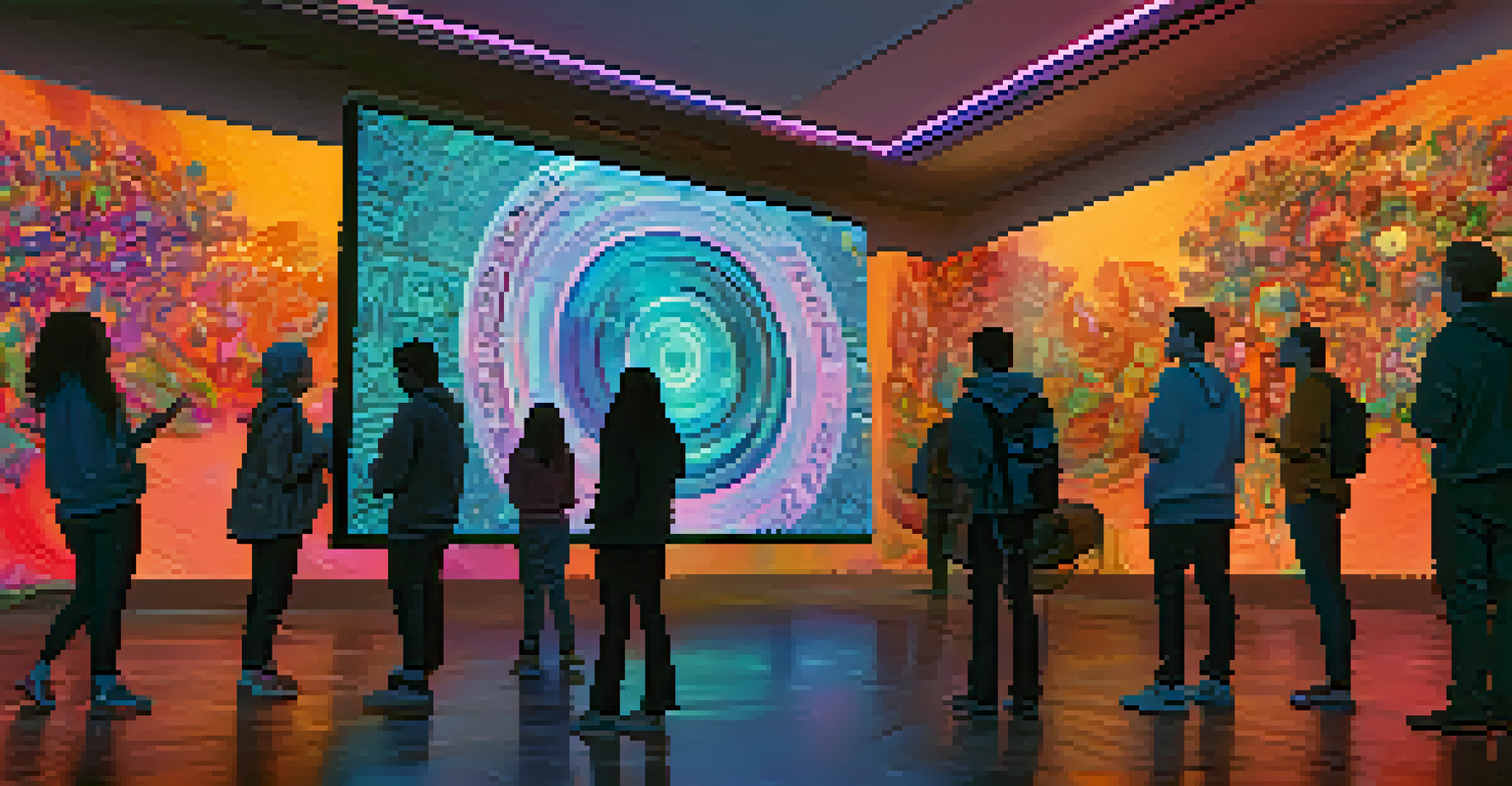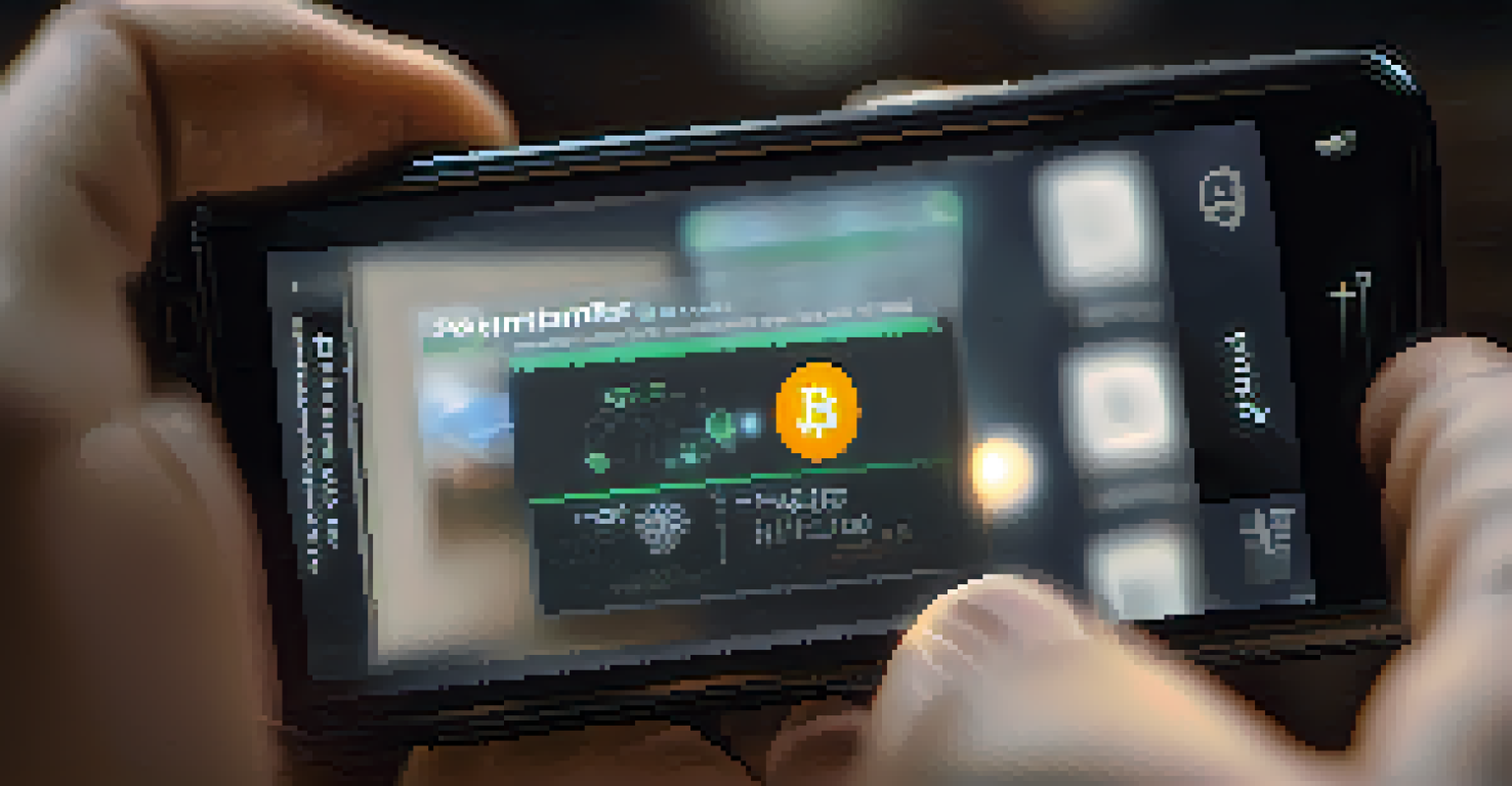Tokenization Explained: Transforming Physical Assets to NFTs

What is Tokenization and Why It Matters
Tokenization refers to the process of converting rights to an asset into a digital token on a blockchain. This transformation allows various physical assets, like real estate or art, to be represented digitally. Simply put, tokenization takes something tangible and makes it accessible in the digital realm, increasing its liquidity and market reach.
Tokenization of assets has the potential to revolutionize the way we invest and manage ownership.
By creating a digital token that represents ownership, assets can be traded more easily and efficiently. Imagine having a rare painting; tokenization allows you to own a fraction of that painting, making it possible for more people to invest in high-value items. This democratization of ownership is one of the most exciting aspects of tokenization.
Moreover, tokenization opens up new avenues for investment and commerce. It not only enhances liquidity but also enables fractional ownership, meaning you can buy a part of an asset rather than the whole. This is particularly appealing for investors who may not have the capital to purchase entire assets outright.
Understanding NFTs: The Digital Representation
Non-fungible tokens (NFTs) are unique digital assets verified using blockchain technology. Unlike cryptocurrencies like Bitcoin, which are interchangeable, each NFT has distinct characteristics that set it apart. This uniqueness is what makes NFTs ideal for representing ownership of physical assets.

When a physical asset is tokenized into an NFT, it carries with it all the information necessary to prove ownership and authenticity. Think of it like a digital certificate of authenticity for a collectible item. This digital proof not only safeguards against forgery but also simplifies the buying and selling process.
Tokenization Enhances Asset Liquidity
Tokenization allows physical assets to be converted into digital tokens, increasing their liquidity and market access.
The integration of NFTs with tokenization is transforming how we view ownership. Instead of relying on traditional certificates or documents, ownership is now recorded on a tamper-proof blockchain, ensuring transparency and trust among buyers and sellers alike.
The Process of Tokenizing Physical Assets
Tokenizing a physical asset involves several key steps, starting with the identification of the asset to be tokenized. This could be anything from real estate to artwork. After the asset is chosen, an evaluation is done to determine its market value and potential for fractional ownership.
The future of ownership lies in the digital realm, where access and investment opportunities are democratized.
Next, legal considerations come into play. It’s essential to ensure that the tokenization process complies with relevant regulations and laws. This is similar to getting a title deed for a property; you need to ensure everything is legally sound before proceeding.
Once all legal frameworks are in place, the asset is converted into a digital token on a blockchain. This token serves as a digital representation of the asset, allowing it to be bought, sold, or traded on various platforms. This seamless merging of physical and digital worlds opens up exciting possibilities for asset management and investment.
Benefits of Tokenization for Investors
Tokenization offers numerous benefits for investors, with one of the most significant being increased liquidity. Traditional investments in physical assets can take time to sell, but tokenized assets can be traded almost instantly on blockchain platforms. This rapid transaction capability can be a game-changer for investors looking to capitalize on market movements.
Another advantage is the opportunity for fractional ownership. With tokenization, you can invest in high-value assets without needing to purchase the entire item. For example, instead of buying an entire piece of real estate, you can buy a fraction of it, enabling more people to participate in lucrative investment opportunities.
NFTs Ensure Ownership Authenticity
Non-fungible tokens (NFTs) provide a unique digital representation of assets, ensuring authenticity and secure ownership.
Additionally, tokenization enhances transparency and security in transactions. With blockchain technology, every transaction is recorded and immutable, meaning it cannot be altered or deleted. This offers investors peace of mind as they navigate the complexities of the market, knowing their investments are securely tracked.
Challenges and Considerations in Tokenization
While the benefits of tokenization are many, there are also challenges and considerations to keep in mind. One significant challenge is the regulatory landscape, which can vary greatly by region. Navigating these regulations can be daunting, making it crucial for businesses to stay informed and compliant.
Another consideration is the technology itself. Not all blockchain platforms are created equal, and the choice of a platform can impact the success of tokenization. It's akin to choosing the right tool for a job; the wrong choice can lead to inefficiencies or, worse, security vulnerabilities.
Lastly, there’s the ongoing need for education in the space. As tokenization is still a relatively new concept, many investors and asset holders may not fully understand its implications. Providing education and resources is essential to ensure that everyone involved can make informed decisions.
Real-World Examples of Tokenization
Several companies are leading the way in the tokenization of physical assets. For instance, platforms like RealT allow investors to buy fractional ownership of real estate properties through tokenization. This means you can invest in properties without the need for large sums of money, making real estate investment more accessible.
Another example is the tokenization of art through platforms like CurioInvest, where art pieces are divided into shares, allowing collectors and investors to participate in the art market. This not only democratizes access to high-value art but also provides liquidity for a traditionally illiquid market.
Fractional Ownership Opens Investment
Through tokenization, fractional ownership enables more investors to participate in high-value assets without large capital.
These examples highlight how tokenization is already making waves in various industries. As more companies adopt this technology, we can expect to see innovative solutions that further bridge the gap between the physical and digital worlds.
The Future of Tokenization and NFTs
The future of tokenization and NFTs appears promising as more industries recognize their potential to transform ownership. As technology continues to evolve, we can expect to see more assets being tokenized, from collectibles to luxury goods. This shift will likely lead to a broader acceptance of digital assets in mainstream finance.
Moreover, the integration of tokenization with emerging technologies like artificial intelligence and the Internet of Things could open new possibilities. Imagine being able to track the ownership and condition of assets in real-time through connected devices, enhancing transparency and security.

In conclusion, tokenization is reshaping how we think about ownership and investment. As we move forward, embracing this technology could lead to more efficient markets and greater opportunities for investors, making the once static world of physical assets dynamic and accessible.